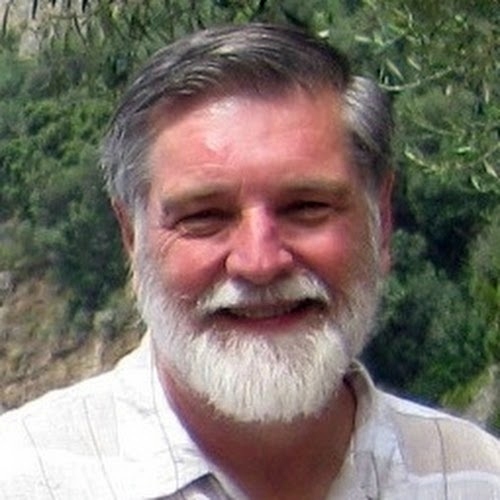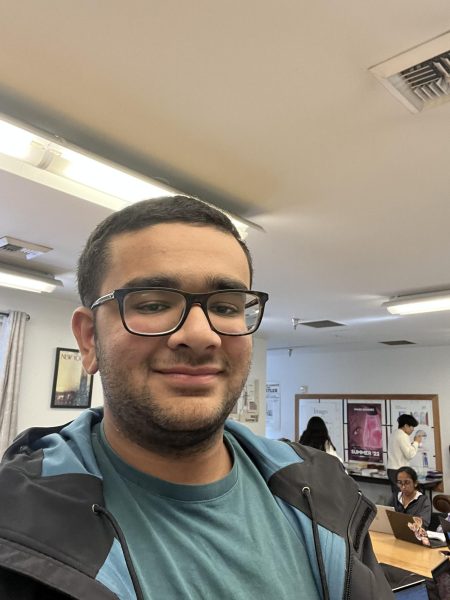
Ask Mr. Dean Ballard, longtime Lakeside math teacher and Math Team coach, what his favorite mathematical object is, and he sinks deep into thought. “Oh, my,” he says. “Of course, the Mandelbrot set is infinitely interesting. But, well, let me think …” And so he takes us along for yet another mind-blowing adventure.
For those who know Mr. Ballard, this inquisitiveness comes as no surprise. Born in Laurelhurst, Mr. Ballard was first exposed to STEM while attending school in Mercer Island. From the start, he was attracted to math and science: “They were fun!” he exclaims. He credits the American High School Mathematics Exam (AHSME — now the AMC 12), though, for inspiring his STEM-related curiosity: In demonstrating his math prowess by obtaining the third-highest score in King County and becoming his school’s AHSME champion, Ballard was endowed with the confidence “to pursue math and science into college [and beyond].” Buoyed by his newfound passion, he attended college at Caltech, which he notes was a struggle. He remarks, “I had never worked really hard [in high school], and that didn’t work at Caltech.” But Mr. Ballard persevered, graduating with a degree in electronics five years later. Looking back, he muses, “[Graduating from Caltech] turned out to have been an excellent thing to do … it opened a lot of doors for engineering jobs and so forth.” As it just so happened to turn out, one of those jobs was close to home.
Mr. Ballard first joined Lakeside in 1976 to teach an electronics science minor for sophomores, one of many hats he would wear as a Lakeside teacher. In those initial days, though, he didn’t know that teaching at Lakeside would be a long-term endeavor. “I was hired very part time,” he says, “two days a week for 10 weeks was the whole job.” But after the job was finished, Lakeside approached him again, this time offering him the half-time position of teaching an algebra class. Mr. Ballard accepted — and from there, his involvement only grew.
Over the next two decades, Mr. Ballard always kept STEM at the forefront of his pursuits. Splitting his time between working at Lakeside as a math and physics teacher and in the industry as a computer programmer, he used the intersection of math, science, and technology to build a framework with which to understand the world around us, whether that was through inventing a Lakeside physics lab which integrated mathematical vector sums with Newton’s Second Law or engineering software to create computer graphics of traffic accidents. Mr. Ballard combined technical acumen with an open mind to both solve problems and teach others how to solve them. Along the way, his STEM-related escapades took him to unexpected places outside of school. While dabbling in an obscure corner of technology — “hired by a company called Microsoft” — he spent five and a half years using his childhood fascination with mathematics to tinker with Bezier curves, ultimately helping to lay the groundwork for the appearance of the Microsoft fonts we know and love.
Ultimately, Mr. Ballard settled down at Lakeside in 1996 as a full-time math teacher. He started teaching sixth grade, which even to this day remains one of his favorite memories: “Sixth-graders [might not] remember what you taught them,” he quips, “but they’re really happy to learn new things!” Perhaps as an indicator of Mr. Ballard’s own penchant for problem solving, he gladly invented and reinvented his entire curriculum, always incorporating new mathematical gems to teach his students in his lessons. A few years later, he moved to the Upper School, where he taught Honors Algebra II (the standard Honors-level math entry point in the early 2000s). In trademark Mr. Ballard-style, his classes put a large emphasis on mathematics as a playground for exploration: “In addition to everything you needed … in a basic precalculus class,” he explains, “We did all sorts of things: Mandelbrot Sets, iterative functions … we [also] made models of the Archemedian solids. It was all sorts of fun!”
After his retirement from teaching in 2008, Mr. Ballard has been in the role in which most Lakesiders know him today. He is the coach of the Math Team, the Lakeside organization which coordinates all of the tests and competitions across the STEM world. Most notably, the Math Team hosts the American Mathematics Competitions (AMC) Series as well as the F = ma Physics Competition, both of which draw high annual participation from Lakeside students. Mr. Ballard is always the friendly face who greets you at these competitions, reads you the rules, and wishes you good luck. If you happen to glance his way during the competition, you might find him doing the problems along with you. “I do,” he admits, confirming the years-long rumors that he literally puts himself in the competitors’ shoes. “I like the [problems] that get me thinking about things beyond the problem.” And this, he says, is the ultimate calling of his work as the Math Team Coach: to not only run the competitions, but to help today’s Lakesiders along in their STEM journeys.
Regardless of how you know him — through the Fibonacci-inspired structure showcased in Allen-Gates, the delightful Math Team emails containing intriguing puzzles, or just seeing his friendly smile across campus — Lakeside would not be what it is without Mr. Ballard’s work. Over the years, he has sparked a passion for STEM in so many Lakesiders and will do so for many more in the future.
Oh, and his favorite mathematical object? Well, it’s more of a math problem.
Consider a cube, where we assign prime numbers to each vertex. We’re given that the cube has the following property: For every face of the cube, the numbers of the four vertices of that face add up to 2024. Of all such cubes, find the one where the primes are closest together (where the difference of the largest and smallest primes is minimized).
Leaning back, Mr. Ballard seems satisfied. “It even ends with a math problem,” he remarks, “so that’s good.” Yes, it is. For through his time at Lakeside, it has been his excitement, curiosity, and gentle guidance which have led so many ideas to be greater than the sum of their parts.

